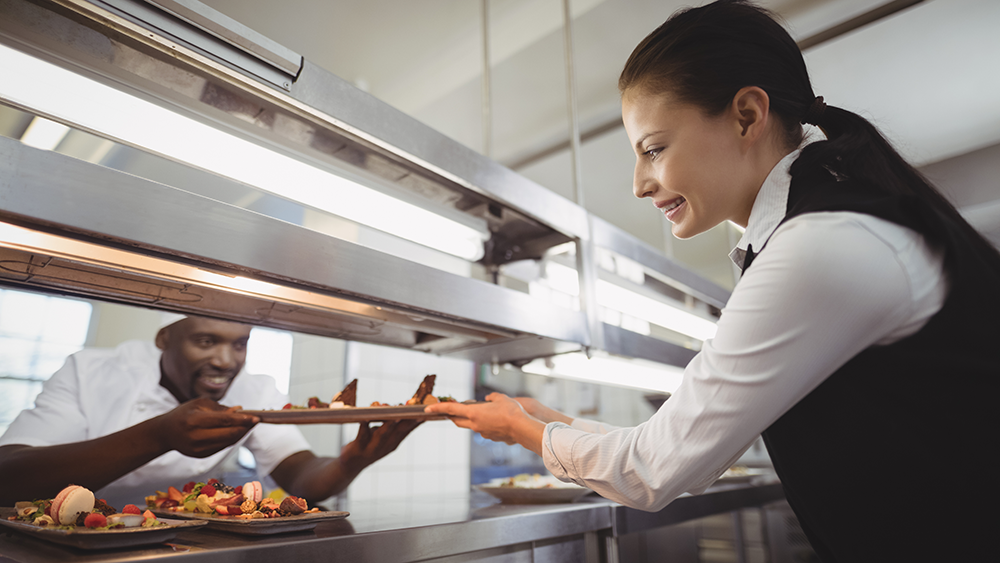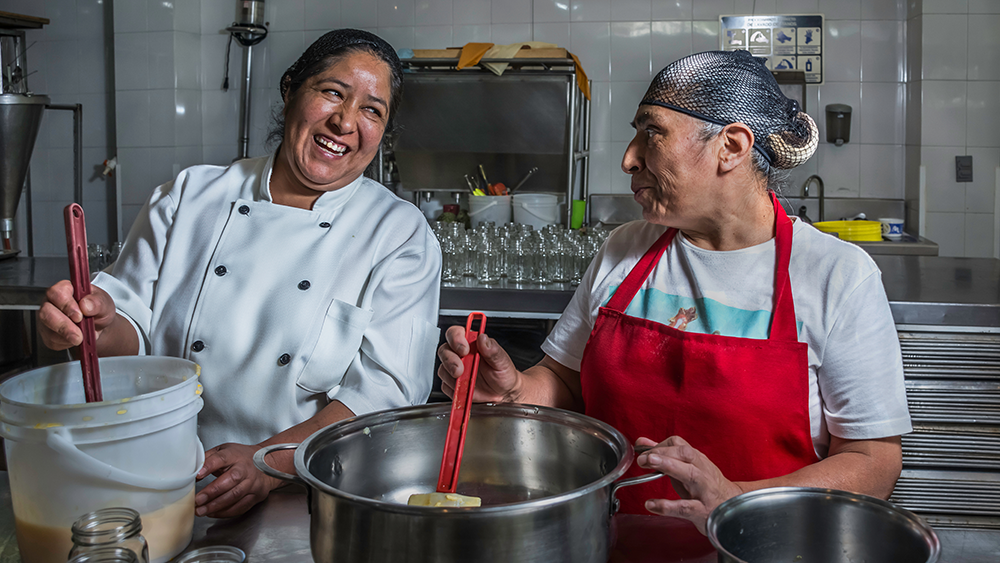
By Alexandra Sheehan, Contributor
Running a restaurant involves a lot of moving parts. It can be difficult to stay on top of everything, let alone make sure you’re optimized to run as efficiently as possible. But that’s why it’s so important to run an efficient restaurant—because things can get so unwieldy so quickly.
Restaurant efficiency is about more than just doing things as quickly as possible. It’s about intentionally running your business and setting up workflows to optimize for speed, cost, and profitability all at the same time. Here’s how you can improve your eatery’s efficiency in an effort to win more customers and boost profitability:
Why Does Restaurant Efficiency Matter?

Restaurant efficiency matters because it both directly and indirectly impacts your bottom line—and the importance of this is further emphasized with inflation as a top challenge for most restaurants. With the rising cost of doing business, it’s important to always seek ways to run more efficiently if you want the business to succeed into the future.
An efficient restaurant minimizes the use of resources while maximizing profitability and sales. This means operating in a way that optimizes cost, time, waste, and more, all while keeping the bottom line in mind. Efficiency essentially boils down to minimizing input while maximizing output. Inefficiency can be costly, both in terms of money and reputation.
When you optimize for efficiency, customers and employees alike benefit. Patrons get their food faster with fewer errors. In fact, faster service would encourage nearly a quarter of Gen Z consumers to dine out more. And your staff has an organized work environment that helps them optimize their own performance. Happy staff and happy customers lead to a happy business.
Efficient processes also reduce waste and help you control costs. In a competitive industry, a well-oiled operation can be the difference between success and failure.
Tips for Improving Restaurant Efficiency

There’s no single approach to boosting efficiency. In fact, if you really want to optimize, then you’ll likely need to address every area of the business.
If you’re looking for ways to manage your restaurant in a more efficient way, keep the following tips in mind.
Streamline Your Menu
A cluttered menu can slow down kitchen operations and overwhelm customers. Focus on a few key dishes that highlight your restaurant’s strengths. Ensure all recipes are standardized, and regularly train kitchen staff to follow these recipes and procedures.
Analyze your sales data to identify the bestselling items and those with the highest profit margins—you can remove items that have low sales and low profit margins. Look for ways to use ingredients across multiple dishes to minimize waste, simplify inventory management, and speed up service.
Stay on Top of Inventory Management
Closely related to menu development, inventory management is another key area for operational efficiency.
Rather than doing counts at random, set a schedule for taking inventory. Use inventory management software that integrates with other tools to boost efficiency even further, minimizing manual tasks and human error. You can then connect your inventory management to a recipe management system to further support efficiency initiatives. You might even set up automatic reorder points for when certain ingredients are running low.
Leverage Technology
Technology and apps can boost efficiency in a number of ways—it can even support some of the other tips on this list. Invest in a modern point-of-sale (POS) system to manage orders, track sales, and analyze customer data, for example.
Integrating technology into your operations can reduce errors and the amount of time it takes to complete various tasks.
Optimize Your Staff

Regular training sessions ensure your staff are knowledgeable and efficient. Empowering them to make decisions can improve service speed and customer satisfaction.
You’ll also want to consider employee schedules. Use data-driven scheduling to make sure you have the right number of staff at peak times and avoid overstaffing during slow periods. This helps manage labor costs and ensures consistent service quality.
Adopt Accounts Payable in Your Restaurant
Adopting an accounts payable (AP) system can streamline your financial operations. This ensures timely payments, great vendor relationships (and discounts!), and accurate financial tracking; reducing the risk of errors and saving time.
Here are some ways you can optimize AP for efficiency:
- Automate your AP processes.
- Implementing AP software to handle tasks like invoice processing, approvals, and payments.
- Create a centralized invoicing dashboard and system.
- Establish clear approval workflows and individuals to ensure invoices are reviewed and approved promptly.
- Regularly monitor and analyze your AP performance.
- Train your staff on the AP process and the use of any new software or systems.
Use a CRM to Drive More Sales
A customer relationship management (CRM) system can help manage customer data, track preferences, and tailor marketing efforts. This way, you can nurture deeper customer relationships and learn more about their dining preferences.
Using that data, you can build more effective marketing campaigns. This also leads to increased customer retention.
Create a Great Website
The restaurant website is a great tool to tap into to support your efficiency efforts. You can use the website to boost visibility of the restaurant, allow for online orders, take reservations, and more—all in an efficient way.
In fact, as many as 65% of consumers will go directly to a restaurant’s website to make a reservation, despite the availability of platforms like OpenTable and Yelp. A great website that allows customers to complete tasks on their own can reduce calls and messages to your restaurant, as well as the amount of time your staff needs to dedicate to interacting with them.
Simplify Payments

Make it easy for patrons to pay their bill. In casual eateries, self-ordering kiosks with the option to pay on the spot can speed up the ordering process, allowing your team to focus on the food.
Self-ordering doesn’t make sense in all restaurants, but you can always introduce new, more efficient ways for diners to pay. Contactless pay, mobile wallets, pre-payments, gift cards, and other payment options can improve the dining experience and make the last interaction with your restaurant more convenient.
Maintain Equipment
Kitchen equipment requires a sizable investment. And if you want it to last, you’ll need to maintain it. While maintenance takes time and money, it can be a much smaller investment than if you were to need to repair or replace something due to neglected maintenance.
Monitor and Adapt
If you’re not auditing and analyzing your data, you’re missing out on major opportunities. Regularly review your operations and, more importantly, be open to change. Collect feedback from customers and staff to identify areas for improvement. Notice where you can improve and also note what’s going well. Then adapt your strategies based on this feedback to continually enhance efficiency.
Conclusion
Achieving peak efficiency in your restaurant isn’t just about speeding up processes—it’s about creating a well-organized environment where resources are used wisely, staff are empowered, and customers leave satisfied.
By streamlining your menu, leveraging technology, optimizing staff schedules, and continuously monitoring and adapting your strategies, you can transform your restaurant into a model of efficiency.
This thoughtful approach not only boosts your bottom line but also fosters a positive atmosphere that benefits everyone involved. In an industry where competition is fierce and margins can be tight, efficiency is the key to sustainable success.
About the Author:
Alexandra Sheehan is B2B content strategist and writer who helps technology companies build strategies and assets that directly support business goals. Her work for companies like Shopify, Intercom, and Verizon is featured on page 1 of many Google searches. Learn more at TheAlexSheehan.com.






